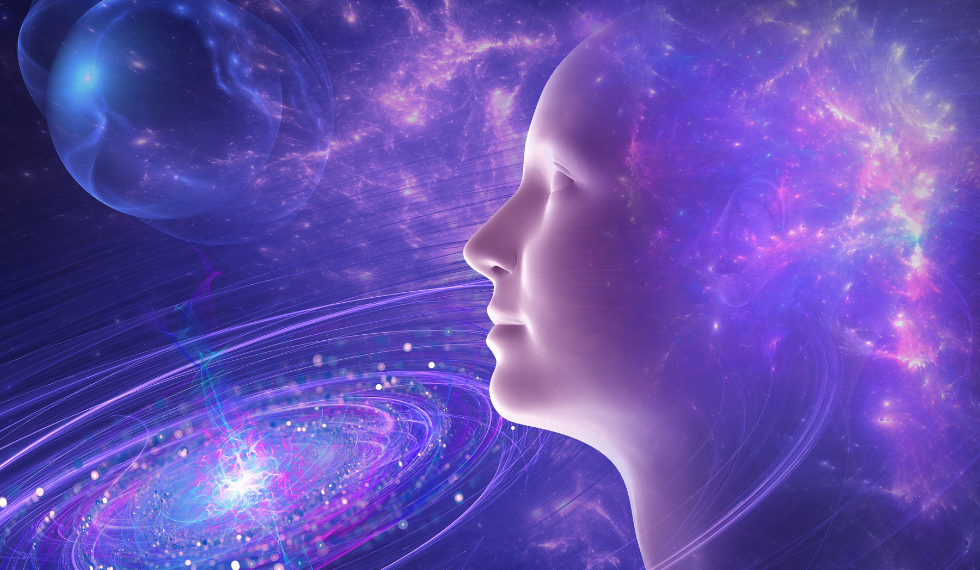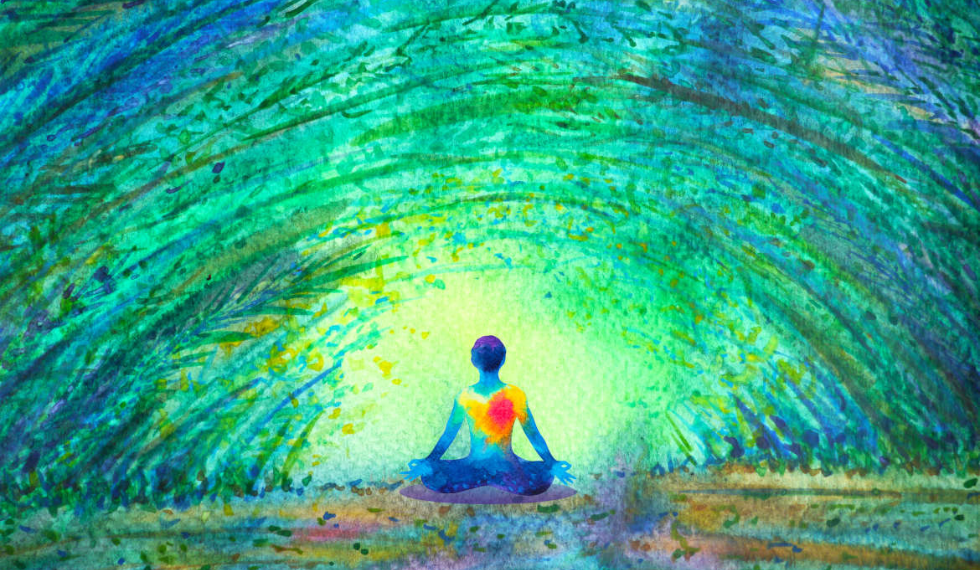The intersection of art and spirituality is a timeless and profound intersection where the human spirit and the realm of creativity effectively merge in a world where we frequently struggle with the complexities of modern life. It’s a space where individuals, regardless of their faith or beliefs, can find support, inspiration, and a deep connection to something greater than themselves.
This dynamic relationship has been a source of attraction over the centuries, where brushes and canvases, carvings and stones, pens and parchment, and even the human body have become the instruments through which the intangible realm of spirituality finds its voice. This exploration is an endeavor to traverse the rich landscape where artistic expression and spiritual contemplation converge, and it aims to uncover the hidden treasures that lie within.
Art as a Spiritual Expression

Art, in its various forms, has long been used as a powerful means of spiritual expression. From the earliest cave paintings to the grand cathedrals of Europe, art has been employed to convey the deepest of spiritual messages. Paintings, sculptures, music, and literature serve as vehicles for the human spirit to communicate with the divine.
Throughout history, artists have drawn inspiration from their spirituality, resulting in works that resonate with profound meaning. Consider the beautiful frescoes adorning the Sistine Chapel, crafted by Michelangelo, where the artist’s deep faith and reverence for God are evident in every stroke of the brush. In the world of music, Johann Sebastian Bach’s compositions, such as his “Mass in B Minor,” are imbued with spiritual devotion and provide a transcendent listening experience.
Examples of art that can be seen as spiritual
Here are a few examples of art that can be seen as spiritual:
- Religious Art: Religious art is created to express the beliefs and values of a particular religion. It can be found in churches, mosques, temples, and other religious buildings. Examples of religious art include paintings, sculptures, stained glass windows, and mosaics.
- Non-Religious Art: Non-religious art can also be spiritual in nature. Many artists explore spiritual themes in their work, even if they do not identify with any particular religion. Examples of non-religious art that can be seen as spiritual include paintings, sculptures, music, literature, and dance.
Art as a Tool for Inner Exploration
Art is not only a means of outward expression but also a tool for inner exploration. Creating art can be a form of meditation and self-discovery. Artists often find that the act of creation allows them to tap into deeper layers of their consciousness, making art an avenue for personal growth and spiritual healing.
Art therapy is a powerful example of how the creation of art can be therapeutic. It offers individuals a non-verbal way to explore their emotions, process trauma, and promote healing. The use of color, texture, and form in art therapy can help individuals express and understand complex emotions that may be difficult to articulate through words alone. This form of therapy has been particularly effective in helping people confront and work through spiritual crises or identity issues.
Art can be a powerful tool for exploring spiritual themes. When we engage with art, it can help us to:
- Connect with our inner selves: Art can help us to connect with our own thoughts, feelings, and experiences. It can also help us to tap into our unconscious minds and to access our deepest selves.
- Explore our spirituality: Art can help us to explore our own spiritual beliefs and experiences. It can also help us to learn about the spiritual beliefs and experiences of others.
- Find meaning and purpose in life: Art can help us to find meaning and purpose in life. It can help us to understand our place in the world and our relationship to others.
The Influence of Spirituality on Art
Spiritual beliefs and practices have left an indelible mark on the art world. Different religious and spiritual traditions have inspired various art movements and styles throughout history. The symbolism and motifs associated with these traditions have become an integral part of artistic expression.
For instance, in the Christian tradition, depictions of saints, angels, and biblical stories have been central to the art world for centuries. The use of light and symbolism in these works often conveys a sense of the divine. In contrast, Buddhist art often features serene depictions of the Buddha and intricate mandalas that reflect the spiritual principles of enlightenment and inner peace.
The influence of spirituality on art extends beyond religious themes. Many artists have drawn inspiration from their personal spiritual experiences, using their art to explore and express the depths of their beliefs. The works of artists like William Blake, who was deeply influenced by his own mystical experiences, offer a glimpse into the individual’s spiritual journey through their art.
Art and Mindfulness

Art can serve as a powerful tool for practicing mindfulness and meditation. The act of creating art requires focus and presence, similar to the practice of meditation. Whether it’s through painting, drawing, or sculpting, the artist must be fully engaged in the process, creating a state of mindfulness.
Moreover, experiencing art as a viewer can also induce a sense of mindfulness. Visiting an art gallery or museum and immersing oneself in the beauty and complexity of artistic creations can be a meditative experience. The viewer is drawn into the artwork, encouraged to contemplate its meaning and appreciate its aesthetic qualities, fostering a deep sense of presence and mindfulness.
Contemporary Examples
In the contemporary art world, the intersection of art and spirituality remains a vibrant and evolving field. Many modern artists continue to integrate spirituality into their work, exploring new mediums and themes that reflect the changing spiritual landscape of our time.
Artists like Yayoi Kusama, known for her immersive and meditative infinity mirror rooms, offer a contemporary take on art as a spiritual experience. These installations invite viewers to step into a space that feels otherworldly and timeless, creating a sense of profound introspection.
The digital age has also expanded the intersection of art and spirituality. Online platforms provide a new canvas for artists to share their work with global audiences, enabling them to explore spirituality in a digital context. Social media and online communities offer spaces for artists to connect and engage with audiences who resonate with their spiritual themes.
Art has also played a role in addressing current spiritual and social issues. Contemporary artists are using their work to explore topics like identity, environmental concerns, and social justice through a spiritual lens. By doing so, they highlight the interconnectedness of art, spirituality, and the challenges of our time.
Here are a few examples of artists who have explored spiritual themes in their work:
- Visual artists: Leonardo da Vinci, Michelangelo, Rembrandt, Vincent van Gogh, Pablo Picasso, Henri Matisse, Mark Rothko, Agnes Martin, Anselm Kiefer, and Frida Kahlo are just a few examples of visual artists who have explored spiritual themes in their work.
- Musicians: Johann Sebastian Bach, Wolfgang Amadeus Mozart, Ludwig van Beethoven, Johannes Brahms, Gustav Mahler, Igor Stravinsky, John Coltrane, and Ravi Shankar are just a few examples of musicians who have explored spiritual themes in their work.
- Writers: Dante Alighieri, William Shakespeare, John Milton, Ralph Waldo Emerson, Walt Whitman, Herman Melville, Leo Tolstoy, Fyodor Dostoevsky, James Joyce, and Virginia Woolf are just a few examples of writers who have explored spiritual themes in their work.
Conclusion
The intersection of art and spirituality is a vast and endlessly fascinating realm. It’s a space where the human spirit finds expression, exploration, and connection with the divine and the inner self. Whether through traditional masterpieces, therapeutic practices, or contemporary digital creations, the relationship between art and spirituality continues to evolve and captivate our hearts and minds.
In a world that often seeks to separate the sacred from the secular, this discussion serves as a reminder of the enduring importance of the intersection between art and spirituality. It encourages us to further explore and appreciate the profound ways in which art and spirituality enrich our lives and provide a path to deeper understanding and connection.






